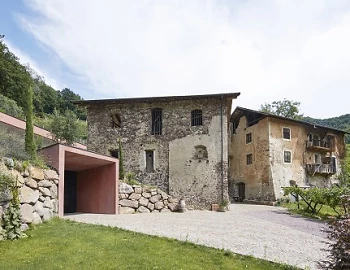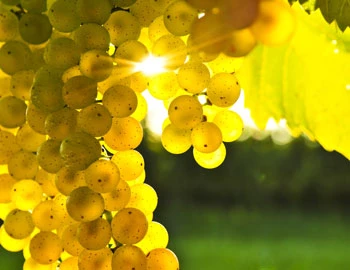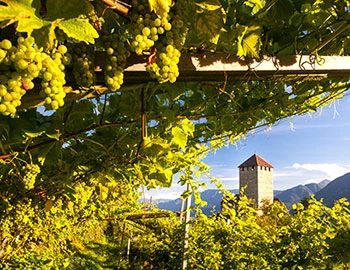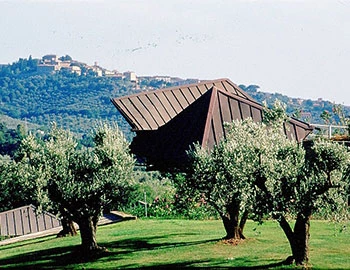Chardonnay Magdalena 2020
DOC Südtirol, Nicolussi-Leck, 750 ml

| Grape variety: | Chardonnay |
| Producer: | Weingut Nicolussi-Leck |
| Origin: | Italy / Alto Adige / Alto Adige |
| Other vintages: |
Description
The Chardonnay «Magdalena» thrives at 350-400 m above sea level on a western slope on gravel, clay soils and porphyry bedrock. These very warm conditions make it possible to produce an expressive Chardonnay. The intense scents of buttered pastry, stewed apples, banana and buttercups combine to form a ripe-fruited composition with scents of bakery. Already at the first sip, the South Tyrolean Chardonnay full of character reveals itself. On the palate, it is fresh and creamy at the same time with an animating acidity and dense extract. Aromas reminiscent of tangerine, rhubarb, granny smith and peach join noble toasted aromas.
Attributes
| Origin: | Italy / Alto Adige / Alto Adige |
| Grape variety: | Chardonnay |
| Label: | Vegan |
| Ripening potential: | 1 to 5 years after harvest |
| Drinking temperature: | 10 to 12 °C |
| Food Pairing: | Italian antipasti, Roast veal with morel sauce, Crispy roast chicken, Cheese board, Orecchiette, Strozzapreti alla siciliana, Asparagus specialities |
| Vinification: | fermentation in wooden barrel, fermentation in steel tank, pressing the whole grape |
| Harvest: | hand-picking, strict selection, in small boxes |
| Maturation: | in tonneau |
| Maturation duration: | 10 months |
| Volume: | 14.0 % |
| Note: | Contains sulphites |
Weingut Nicolussi-Leck
The Kreithof, as the ancestral estate is known, is located near the idyllic Lake Caldaro in South Tyrol (Alto Adige) and has been cultivated by the Nicolussi-Leck family since 1915. Standing guard over it are the medieval ruins of Leuchtenburg Castle, which – like the estate – dates back to the 13th century and was presumably also associated with nearby Laimburg Castle in the Etsch Valley.
Today, the winery is run by Jakob Nicolussi and his wife Stephanie with his parents’ support. Around 5 hectares lie between the lake and Leuchtenburg. There are east, south and west-facing slopes at about 350 metres above sea level, some with a gradient of up to 40% and warm, loamy soils and the porphyry rock of Mitterberg mountain. Each vineyard or plot of land has its own unique microclimate and soil composition that distinguish it from the others. This diversity was used to select the ideal location for each grape variety.

Chardonnay
King or beggar?
Hardly any variety of vine shows such a broad spectrum of quality as the Chardonnay. Its wines range from faceless neutrality to breath-taking class. It is an extremely low-maintenance vine, which explains why it is grown around the world – even in places where it probably should not be. The aromas of the Chardonnay variety are not very pronounced: a bit of green apple, a little hazelnut; in warmer latitudes, also melon and exotic fruits. The wines are often defined by maturing in casks. They develop more or less subtle notes of butter, toasted bread and vanilla. The grapes achieve their highest expression in their region of origin, Burgundy. Its heart beats in the Côte de Beaune: one might think of the plant growth of Meursault or Puligny-Montrachet. With their finesse and complexity, they can survive for decades. Chardonnay also achieves first class in some Blanc-de-Blancs champagnes. It additionally yields great wines in the Burgundian Chablis, and increasingly in Australia and Chile. A simple rule of thumb for pairing with food: When butter and cream are involved, you cannot go wrong with Chardonnay.

Alto Adige
Alto Adige: Alpenweine mit südlichem Charme
Am Alpenübergang gelegen verfügt das Südtirol über eine grosse Palette an Mirkroklimata und Bodentypen. Dies macht es möglich, dass hier über 20 verschiedene Sorten optimale Bedingungen vorfinden. Vernatsch, Lagrein und Gewürztraminer gelten als alteingesessene Südtiroler Gewächse, doch auch die Familie der Burgundergewächse finden hier ideale Bedingungen vor. In wichtigen Weinführern wie etwa dem «Gambero Rosso» erhält das Südtirol regelmässig die meisten Höchstbewertungen («Tre Bicchieri») im Verhältnis zur Rebfläche in ganz Italien.

Italy
Italy – Where wine is a way of life
The Italian wine regions are extremely diverse, and this is made clear in their wines. Established varieties such as Merlot, Syrah, and Sauvignon can be found on just 15 percent of the total vine growing area. The remaining 85 percent is reserved for autochthonous, indigenous varieties. More than 2,000 different grape varieties are grown under diverse conditions and pressed with various techniques into wines that reach the top tier of the international wine market.







